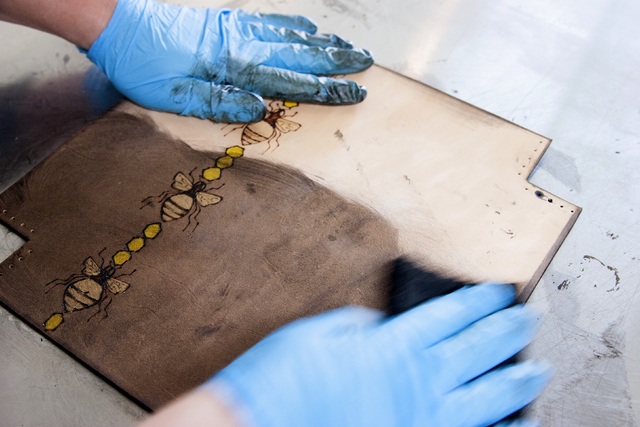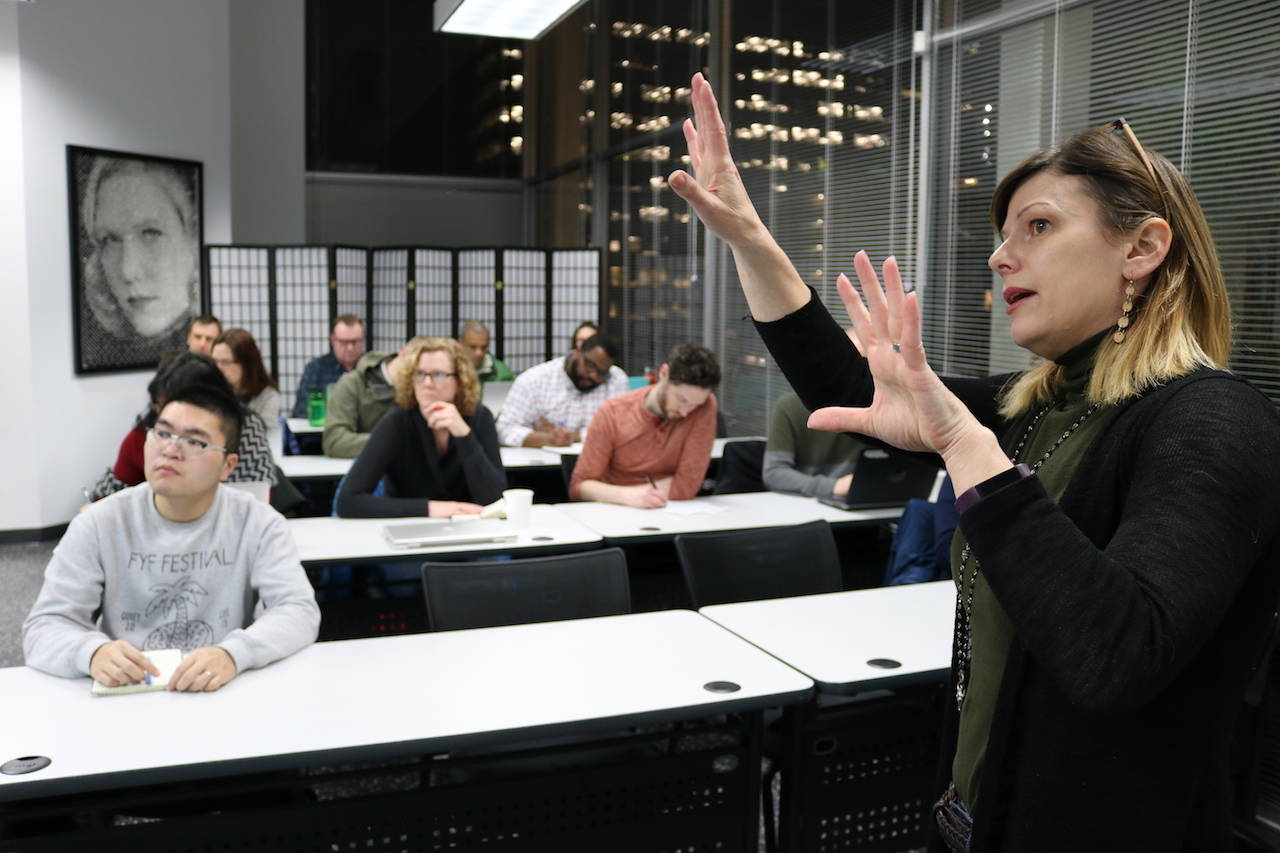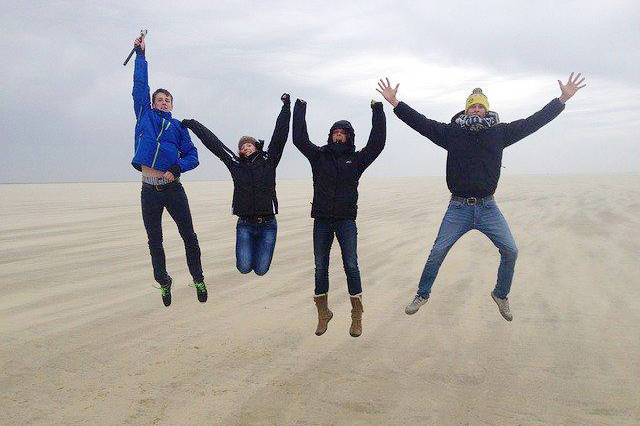As she talks, Caitlin McNamara is stitching a wallet, gripping the rough brown thread as she jerks the needle through, relaxed as a grandma knitting over tea. It’s turquoise, laced with floral vines, and though it already has its shape, in the course of our conversation it sprouts two snaps and pockets.
“What sets my work apart from other leathercrafters is that I add a lot of pattern and color,” says the owner of Moxie & Oliver in Broadview. “And that’s something that’s easy for other people to do, given a little instruction and a little encouragement. And the release of the idea that it has to be perfect.”
Behind the pink doors of her studio, McNamara hosts a diverse array of students for whom perfection can be an obstacle. Her last class, she points out, was three engineers and a social worker. Very rarely does she get a student with an artistic day job, so her lessons emphasize trust in process, and practice. Leather, she insists, “doesn’t want to be perfect; it’s a natural material.” She says that this is a difficult lesson for many of her students to learn. So why does her class attract such results-driven people?
“I think if you spend all day looking at a computer, at some point you’re really gonna need a break,” McNamara laughs. “And you need to exercise your creativity in a way that’s physical, and you see your results, and you have this thing that you can take home from that class that you can be proud of.” The accomplishment is tangible, and that’s what makes it satisfying.
That, and the efficiency of it all. Four hours in McNamara’s studio and you’ll walk away with a wallet, phone case, flask cover, or an original idea you’ve brought to the table made real. That’s not to say leathercraft is easy. Rather it is McNamara, through 12 years of experimenting, who has brought this ancient art form into our fast-paced modern day. She’s created a straighter path to the same result.
“I’ve always been one of those people that’s like, ‘There must be an easier way to do this.’ I don’t always accept that the way things have been done for the last thousand years is necessarily the right way to do it.” Being self-taught is a big part of this, she explains. “I wasn’t confined by tradition, in a way that people learning from an educated master who’s been doing this for a hundred years, or whatever. The only thing I really had to go on was my own intuition about how to get things done.”
One thing she eschews is the idea that each layer must be glued and hole-punched at the same time. Instead, McNamara punches each hole individually, which makes stitching a lot easier. She’s also developed her own take on the saddle stitch, to avoid splitting threads and increase the tension. With less grief in the process, McNamara can focus more of her lessons on style.
Outside her studio hours, she recently taught her daughter’s kindergarten class how to mark their leathercrafts with Sharpie. If parents trust their children with permanent markers, she says, laughing, it can be a great way to introduce them to design concepts. Her 6-year-old, who just made her first wallet, hopes to inherit her own workspace.
McNamara sees a purpose for her homegrown technique, because it’s appealing to a wider audience. She wants to bring leathercraft out of the confines of summer camp and medieval festivals, and get people thinking about it differently. McNamara wants them to use “leather as a canvas, instead of a fabric. For me, honestly, it became something of an obsession. There really was just no stopping me.” Find Moxie & Oliver classes at Connect2Classes.








